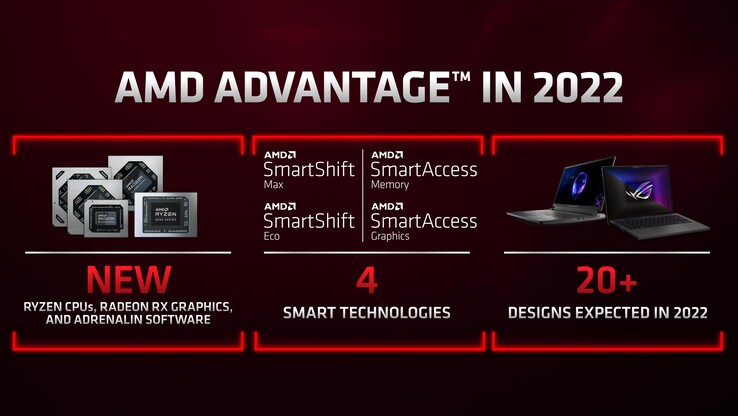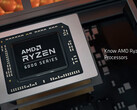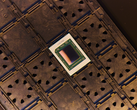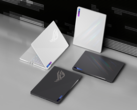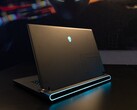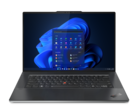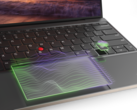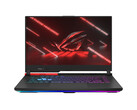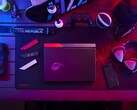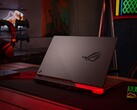Interview | "We have the best fans carrying the torch for us": AMD's Sasa Marinkovic talks to us about the AMD Advantage program and how the company is no longer perceived as a mere value brand
AMD made several announcements at CES 2022 across desktop, mobile, and graphics. The company is finally launching the Ryzen 6000 Rembrandt APUs today along with new Radeon RX mobile GPUs.
Apropos to today's launch, NotebookCheck editors Vaidyanathan Subramaniam (VS) and Anil Ganti (AG) recently had a candid conversation with Sasa Marinkovic (SM), Global Gaming Marketing Director at AMD to understand more about the AMD Advantage Program and how the company wants to position itself with the new launches.
VS: So, how are you doing Sasa?
SM: Great. It's been a super exciting start to the year. You know, we have announced a lot of news — a lot of things on the CPU side, on the GPU side, AMD advantage laptops, mobile desktop — the year's definitely off to a bang. And we are very excited about all the products and all the innovation and technology that we are bringing to the market.
SM: What was your take on CES this year?
VS: I think it's been great. We did see several innovations and new designs this year. AMD seems to have done a good job and your OEM partners have put out some exciting products. Having said that, we would like to see more OEM laptops with AMD processors. If I recollect correctly, back in 2020, we had this Dell G5 15 Special Edition for which we saw a lot of interest among our readers. I think it was the one of the first devices with an AMD Ryzen 4000 series APU and Radeon RX 5600M discrete graphics combination. Since then, people have been looking forward to more all-AMD configurations across OEMs. But two years on, we still haven't seen too many all-AMD machines on the market.
AG: There's an all-AMD Alienware m17 R5 this year, but there's surely scope for more. Do we get to see more such devices later this year?
SM: Yeah, I mean, we talked about this a little bit more during CES. We are bringing AMD Advantage as a concept, as a design framework. The intention here is that we create a really, really well balanced, compelling laptop for gamers. And as we know, when you have a good gaming laptop, it sets the bar for what the laptop should look like in the industry because it has probably the best combination of performance and display and all the other interfaces there.
So, how we designed this framework was, you know, it's going to have best CPU and the GPU as well as the smart technologies that are going to be removing some of the bottlenecks in the system and delivering great performance per watt, battery life, and so on. Then we looked at the premium visuals or what the displays look like, so that it has FreeSync, great refresh rates, and so on that are very important. And then the third one was this is built to game so we set defined the temperature targets, which is you know that it should be comfortable when you touch the WASD keys. Also, that it should have a good keyboard or there's lighting on the keyboard as customers would want. Then there are certain expectations about what the memory is going to be — that it's not a single channel but dual channel memory, you know. These are all the things that we have seen in the past where gamers and people were complaining or wishing to have in their system.
So, we looked at the feedback and all these decision points and said, let's address them in something that we are going to call AMD Advantage. So, at the end of the day, it's going to be very easy for gamers who know that this is a premium quality laptop when they're buying it. And it doesn't have to be $2,500 or higher in order to be premium, you know, it can be at different price points. But what it has to be is that it should be really well built all around, have a good CPU, GPU, smart technology optimizations in the system, good display, and then 100 other decisions that make it a premium gaming laptop.
In 2021, we had about seven designs. Our goal here wasn't to go after the volume and, you know, have as many as possible. Because when your only objective is to get out as many laptops as possible, then it starts watering down to probably just what the specs are going to be. We want to make sure that this is premium through and through. And you know that we are expanding every year on the setup, the specs that go in there, and that we are setting a new bar. We are expanding on quality and not just quantity. Luckily, OEMs are seeing things our way and are embracing it very much so. This year, we are seeing over 20 designs that are going to be hitting the market. And then next year, hopefully more.
VS: I have an observation here. My first impression when I reviewed the MSI Alpha 15 was that it was a great laptop for gaming, though there are some compromises on the OEM side of things. But the question that has always been there in our minds was, why haven't we seen more such designs? I mean, there is enough scope. For example, Asus has ROG Strix G15 and ROG Strix G17 laptops, which are the top spec AMD Advantage devices, but there are only two such devices in the wild. While we are glad that we will be seeing 20 designs this year, I feel a lot could have been done before as well.
SM: Yeah, we are definitely working very closely with OEMs and they are seeing a huge value in working with us. Obviously, the timing needs to be right for them as well. It takes a little bit of time to design and see how these fit into their portfolio of designs, when they're going to be bringing them to the market, and a number of other factors. But we are seeing that they're definitely seeing the value of working with us from having all-AMD laptops to designing AMD Advantage laptops. We are seeing really, really good momentum with the Ryzen APUs whether it's the 5000 series or the 6000 series. The Ryzen 5000 has been designed into about 150 premium designs across commercial, consumer, and gaming. For the Ryzen 6000 series, we are tracking to over 200 designs. So, the momentum is definitely going well. When it comes to Ryzen 6000, as you know, that's going to have RDNA 2 inside and that can work as a standalone or with discrete graphics.
VS: Carrying on from that, whenever we cover all these launches during CES, Computex, and others, when we kind of tally all the spec sheets of laptops with say, an Intel-Nvidia combo versus AMD-Nvidia or AMD-AMD, there are some lacunae. It's as if OEMs think, you know, having an AMD spec machine as an afterthought. For instance, a similar Intel device would offer, say, all kinds of zonal RGB lighting or more improved fan profiles, or better displays while the AMD device would be capped at some spec. I wouldn't say this necessarily "degrades" your experience as such, but it feels you're just one step short of the finish line, right? That is something we would like to overcome because you're limiting the choice for the consumer.
AG: And sometimes it almost seems like some OEMs are going out of their way to sort of gimp their AMD offerings, so the Intel-Nvidia one stands out.
SM: Right, yeah. I think those were some compromises that OEMs were making in the past. And in the past, I think they perceived our products as the "value brand", so they were fighting more on the cost than on features and everything else. I think that situation has changed significantly. Earlier, it used to be 100 notebooks, then 150. Now, it's going to be over 200 premium designs. But I definitely think that things have changed and that OEMs are not thinking about AMD that way.
We are seeing some really, really amazing designs and, you know, on the CPU side of the house, you're seeing a landslide in terms of the number OEMs embracing it. Going from HP, Lenovo, Asus, Razer, everybody is jumping in on the bandwagon and really using Ryzen as a great premium.
VS: Let's take HP, for example. I've covered a few of their ProBook series launches for CES. If memory serves me right, some of their higher end offerings were not fully AMD, similarly with the high-end ZBook Firefly. The Spectre lineup hasn't featured AMD parts either.
SM: On the flip side, you know, you see the ThinkPad Z16 from Lenovo right now, and what kind of an amazing laptop that one is. Definitely when I look at it, I want one of these for myself. And I think those premium designs — I think Lisa talked about them there on the screen behind her during the presentation — are the ones that our customers are going to be bringing to market. Definitely a lot of great choices for the end users. So, as I said, I think some of the things that you are mentioning are a thing of the past. And with every passing day, we are seeing more and more premium designs being brought to the market with AMD processors.
AG: So, moving on from OEMs to end users. What plans does AMD have to market its laptops to the average consumer because largely until now based on what I've seen, the laptop space has been dominated by Intel. So how do you plan on changing that now that you've got this huge Advantage platform going for you?
SM: There's the whole customer journey of how you're ensuring that the end users know about us, that they are considering us, and that they prefer us. I think one of the old ways that is very, very successful and impactful is word of mouth. People who are buying AMD products are going to experience how great they are, and they're going to be telling their friends. And that endorsement is very, very important. The second one is, we are working with our colleagues in the media. They are reviewing the systems and are looking at them from the performance, visuals, quality of build, what they're bringing to the market, and talking about that. Let's call them influencers, people who are reviewing it on YouTube, on Instagram and so on. They can experience how these products are performing and what they are bringing to the market. And once we have done that, it's actually you people that are trying it, who can have it in their hands, and see how great a lot of these are. We are then amplifying with the help of our partners, be it retail or e-tail, with our regional customers, with social media, and promoting it through AMD channels on Twitter, on Facebook, on Instagram, on YouTube, and obviously through partnerships with OEMs. So that on "oem.com", you're seeing that that they are carrying the flag for us and putting it in front of customers.
So, there are a number of things that we are working on. I think it starts with the user and somebody trying it and experiencing it, liking it, and then telling others. Then there's also how do we improve not just consideration but also reach so that more people are going to hear about AMD and, in particular, these laptops. You know, our master brand is improving with every passing day as well, whether it's on the data center side — and they're doing really well — consumer, gaming, supercomputers, enterprise and so on. And the more that people hear about AMD, globally, the better it is going to be on how you go from the reach, to the consideration, to the preference, and to loyalty.
VS: Is any OEM incentivization a part of this? I mean, obviously, you might not be able to go into full detail. Let's leave what the big players say for a moment. You take an ODM, for example, like a Clevo or a TongFang chassis. What I've heard from inside circles is that system builders using these chassis are probably being incentivized by your competitors. But, as you said, word-of-mouth marketing for Zen 3 seems to be quite effective. So, I was just wondering, you know, if this is something on the back of your head, like incentivizing OEMs, making them aware of the platform advantages, and things like that.
SM: You know, I think we live in a world where there are ways as to how you can get to the end users, and AMD has very powerful channels. As discussed, the social channels are doing really well, we probably, and I'm maybe biased here, but I think we have the best fans in the world, the best customers who are very vocal, and are very engaged with the brand.
I think we have the best fans in the world, the best customers who are very vocal, and are very engaged with the brand"
When I look at our channels, from Twitter, to YouTube, to Reddit, to Instagram, you know, people want us to succeed, they want us to win in the market, they are really carrying the torch for AMD. And when we are posting and engaging with them, we see that they are the best brand ambassadors. We do use our social channels to further get the word out and to be promoting our partners. And then, we are seeing the partners promoting AMD as well as there's a significant excitement about AMD products in the market, and the market is responding really well.
The way that our customers are engaging with OEMs is very heartwarming, because whenever you see somebody from the OEMs, bringing an AMD SKU promoting it or not promoting it, the end users are kind of saying, why don't you have AMD? AMD is doing really well, we want this performance, we want these features, we want this value, why aren't you doing it? So, I think our fans and our customers are some of the bests in the world. We are engaging with them in a meaningful way, and I believe that OEMs are seeing the value there and bringing the designs based on the value proposition that our products bring to the market.
VS: When mobile RDNA 2 parts were announced last year, there was a significant time gap between Nvidia and AMD mobile GPU launches. I believe there was a three- or four-month gap between these so that sort of had a hit on the mindshare is what I think. Going forward, do you see that gap closing down towards more concurrent and competitive launch timelines?
SM: You know, I think we are extremely competitive in the market. When you look at what Laura Smith talked about in her section of the keynote, we have three slim products, for thin and light laptops, and then eight additional mobile products or M series from the RX 6300M all the way to the RX 6850M XT. For every price point, we have a really good product value proposition. And then on the desktop side, we have about 300 AiBs, SIs, and OEMs bringing a variety of pre-built systems or AiB boards to the market. I think there's a lot of great momentum for AMD. I'm seeing excitement in the market; I know our products are top to bottom stack — OEMs can choose at any price point at any performance level. So, I feel very, very confident in the products that we have, in the offerings that we have, and how the market is responding to those.
AG: Now that we've established that you've got a solid marketing plan, most people — like the majority out there — they're not in the market for a $4,000 laptop. Many people, especially in markets like India, are looking at capable sub-$1,000 offerings, and that space is largely dominated by Intel. So, do you have any specific marketing policy to capture that particular section of the market?
SM: Well, you see how great Ryzen 6000 with RDNA 2 is. We talked about improvements on the processor side by 1.3x and on the GPU side by 2x — all while you're having up to 24 hours of battery life. So, the product value proposition is solid.
We are going to be hitting different price points in different form factors, whether it's commercial, productivity, gaming, light gaming, and so on. And Lisa has talked about over 200 designs that are going to be leveraging Ryzen 6000. So, I believe that there's going to be a lot of choice in the market, and I think there's a lot of excitement in the market. Hopefully, those two are going to come together for everything that you're talking about.
VS: is AMD Advantage going to percolate to the lower end of the spectrum?
AG: Let's say a Ryzen 3 and an RX 6300 GPU, for example.
SM: I can't talk about the SKUs at a certain price point right now for your specific market, to be honest. What we can do is perhaps work with our regional team to show the offerings in that segment, and then send it your way to see what is either currently assorted, or where we see the assortment coming to.
VS: The reason why we are interested in that is that the lower end still offers high value 1080p high or 1080p medium performance for a casual gamer who would also want to derive some advantage. A lower-end laptop might actually work well with content creation than gaming since you don't need too much GPU power to run to transcode video or something like that, unless you're doing 4K or above. So, if I'm a content creator and want to have a thinner design, I would go for a medium spec that, you know, sort of balances both content creation and casual gaming.
While I was testing out the Adrenalin software with AMD Smart Shift, I was able to see how the software is able to adjust the CPU versus GPU bias dynamically. Though as an enthusiast, I would like to have some finer control of this in the BIOS as well, I don't think you would actually be allowing that. Nevertheless, it would be really advantageous, so to speak, if we can have some sort of a Smart Shift-esque implementation between the RDNA 2 iGPU and the CPU within the 15 W envelope for maximum benefit.
SM: Yeah, I mean, you're making an excellent point. And out of those designs that are coming up, we can definitely put together a list that we want to bring to your attention. And I'm sure our team is going to be working very closely with you to ensure that that you have full visibility into that one. But some of the designs that we are bringing to the market are really, really impressive. Some of the ones that I had the opportunity to see that we brought forward at the CES keynote and Lisa sections look really exciting. So, let us work with our team to put together a list of the ones that are currently on the market, and then be informing you along the way as the new SKUs become available and assorted.
AG: Okay, so you've probably been asked this a million times. But are there any special measures that you're taking to ensure that availability isn't a problem with AMD Advantage laptops or AMD SKUs in general? Just about everything has been hard to find.
SM: We are working very hard to bring as many products to the market as possible. And the demand has just been great. And it continues to be strong for our products.
VS: Are you facing any issues on the supply side like how we had with the Radeon GPUs last year?
SM: I don't have visibility from that side. The comments that Lisa has made are probably the best ones to go with. You know, I'm more on the product side and marketing side. In terms of the supply as I said, we are working with our partners to bring as many products to the market as possible. You might have more to say there from your perspective but from the product perspective, I'm just glad that there's so much excitement in the market.
AG: We've been seeing gaming handhelds like the Steam Deck running on AMD silicon. Do you have anything handheld-specific in the pipeline that you could tell us about?
SM: Yeah, I mean, our relationship with Valve is great, as well as with Microsoft and Sony on the console side. We don't have any announcements to make about anything else. I'm really looking forward to Valve's handheld and what that is going to be coming to the market. Obviously, we talked about the partnership with Samsung in terms of the IP and that seems to be a very good one as well.
We would like to thank Sasa Marinkovic for his time, and AMD for facilitating this interview.


